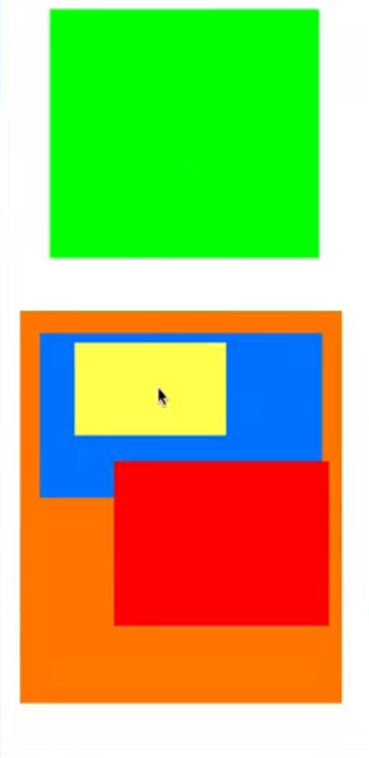iOS runtime的理解和應用
項目中經常會有一些的功能模塊用到runtime,最近也在學習它.對於要不要閱讀runtime的源碼,我覺得僅僅是處理正常的開發,那真的沒有必要,只要把常用的一些函數看下和原理理解下就可以了.
但是如果真能靜下心好好閱讀源碼,真的能幫你更加深入理解objc本身以及經過高階包裝出來的那些特性。
什麼是runtime
runtime就是運行時,每個語言都有它的runtime.通俗點講就是程序運行時發生的事情.
比如C語言,在編譯的時候就決定了調用哪些函數,通過編譯後就一步步執行下去,沒有任何二義性,所以它是靜態語言.
而objc的函數調用則可以理解為發消息,在編譯的時候完全不能決定哪個函數執行,只有在運行的時候才會根據函數名找到函數調用,所以在運行的時候它能動態地添加調換屬性,函數.所以它是動態語言.
動態和靜態語言沒有明顯的界限,我感覺它們就是以runtime來區分的,看它在runtime時,有多靈活,那麼它就有多動態.
相關定義
typedef struct objc_method *Method struct objc_method { SEL method_name; char *method_types; IMP method_imp; }SEL是char*,可以理解為函數的姓名.
IMP就是函數指針,指向函數的實現.
==在objc_class中method list保存了一個SEL<>IMP的映射.所以通過SEL可以找到函數的實現==
typedef struct objc_ivar *Ivar;
struct objc_ivar {
char *ivar_name;
char *ivar_type;
int ivar_offset;
#ifdef __LP64__
int space;
#endif
} 實例變量,跟某個對象關聯,不能被靜態方法使用,與之想對應的是類變量
typedef struct objc_category *Category;
struct objc_category {
char *category_name;
char *class_name;
struct objc_method_list *instance_methods;
struct objc_method_list *class_methods;
struct objc_protocol_list *protocols;
} Catagory可以動態地為已經存在的類添加新的行為。比如類方法,實例方法,協議.
==根據結構可知,不能添加屬性,實例變量==
struct objc_method_list {
struct objc_method_list *obsolete;
int method_count;
int space;
struct objc_method method_list[1];
}
struct objc_ivar_list {
int ivar_count;
int space;
struct objc_ivar ivar_list[1];
} ==簡單地理解為存有方法和實例變量的數組==
//類在runtime中的表示
struct objc_class {
Class isa;//指針,顧名思義,表示是一個什麼,
//實例的isa指向類對象,類對象的isa指向元類
#if !__OBJC2__
Class super_class; //指向父類
const char *name; //類名
long version;
long info;
long instance_size
struct objc_ivar_list *ivars //成員變量列表
struct objc_method_list **methodLists; //方法列表
struct objc_cache *cache;//緩存
//一種優化,調用過的方法存入緩存列表,下次調用先找緩存
struct objc_protocol_list *protocols //協議列表
#endif
};
struct objc_cache {
unsigned int mask;
unsigned int occupied;
Method buckets[1];
};==objc_cache可以理解為存最近調用過的方法的數組,每次調用先訪問它,提高效率==
runtime常用方法
獲取列表
我們可以通過runtime的一系列方法獲取類的一些信息(包括屬性列表,方法列表,成員變量列表,和遵循的協議列表)class_copyPropertyList //獲取屬性列表 class_copyMethodList //獲取方法列表 class_copyIvarList //獲取成員變量列表 class_copyProtocolList //獲取協議列表常見用於字典轉模型的需求中:
@interface LYUser : NSObject
@property (nonatomic,strong)NSString *userId;
@property (nonatomic,strong)NSString *userName;
@property (nonatomic,strong)NSString *age;
@end
- (void)viewDidLoad {
[super viewDidLoad];
//利用runtime遍歷一個類的全部成員變量
NSDictionary *userDict = @{@"userId":@"1",@"userName":@"levi",@"age":@"20"};
unsigned int count;
LYUser *newUser = [LYUser new];
objc_property_t *propertyList = class_copyPropertyList([LYUser class], &count);
for (int i = 0; i < count; i++) {
const char *propertyName = property_getName(propertyList[i]);
NSString *key = [NSString stringWithUTF8String:propertyName];
[newUser setValue:userDict[key] forKey:key];
}
NSLog(@"%@--%@--%@",newUser.userId,newUser.userName,newUser.age);
}

==這只是最簡單的轉化,還要考慮容錯,轉換效率,現在有很多開源框架做的很不錯.這是一些開源框架的性能對比:==模型轉換庫評測結果
- 交換方法
class_getInstanceMethod() //類方法和實例方法存在不同的地方,所以兩個不同的方法獲得
class_getClassMethod() //以上兩個函數傳入返回Method類型
method_exchangeImplementations //()交換兩個方法的實現==這個用到的地方很多,可以大大減少我們的代碼量,常用的有防錯措施,統計打點,統一更新界面效果==
防錯措施
-(void)viewDidLoad
{
NSMutableArray *testArray = [NSMutableArray new];
[testArray addObject:@"1"];
NSString *a = nil;
[testArray addObject:a];
for (NSInteger i = 0; i < testArray.count; i++) {
NSLog(@"%@",testArray[i]);
}
}
@implementation NSMutableArray(ErrorLog)
+(void)load
{
Method originAddMethod = class_getInstanceMethod(NSClassFromString(@"__NSArrayM"), @selector(addObject:));
Method newAddMethod = class_getInstanceMethod(NSClassFromString(@"__NSArrayM"), @selector(el_addObject:));
method_exchangeImplementations(originAddMethod, newAddMethod);
}
/*
* 自己寫的方法實現
*/
-(void)el_addObject:(id)object
{
if (object != nil) {
[self el_addObject:object];
}
else
{
//可以添加錯誤日志
NSLog(@"數組添加nil");
}
}
@end

統計打點
和上面的實現方式一致.在對應類的Category的load方法裡交換.
// 統計頁面出現
Method originAddMethod = class_getInstanceMethod([self class], @selector(viewDidLoad));
Method newAddMethod = class_getInstanceMethod([self class], @selector(el_ViewDidLoad));
method_exchangeImplementations(originAddMethod, newAddMethod);
// 統計Button點擊
Method originAddMethod = class_getInstanceMethod([self class], @selector(sendAction:to:forEvent:));
Method newAddMethod = class_getInstanceMethod([self class],@selector(el_sendAction:to:forEvent:)));
method_exchangeImplementations(originAddMethod, newAddMethod);
統一更新界面效果
很多時候我們做項目都是先做邏輯,一些頁面顏色,細節都是最後做.這就遇到了一些問題,可能只是改個cell右邊箭頭邊距,placeholder默認顏色.如果一個個改過來又麻煩又有可能有疏漏,這個時候runtime就可以大顯神通了.
//這個就可以統一cell右邊箭頭格式,非常方便
+ (void)load {
static dispatch_once_t onceToken;
dispatch_once(&onceToken, ^{
Class class = [self class];
SEL originalSelector = @selector(layoutSubviews);
SEL swizzledSelector = @selector(swizzling_layoutSubviews);
Method originalMethod = class_getInstanceMethod(class, originalSelector);
Method swizzledMethod = class_getInstanceMethod(class, swizzledSelector);
method_exchangeImplementations(originalMethod, swizzledMethod);
});
}
//設置cell右邊箭頭
- (void)setAccessoryType:(UITableViewCellAccessoryType)accessoryType {
if (accessoryType == UITableViewCellAccessoryDisclosureIndicator) {
UIImageView *accessoryView = [[UIImageView alloc] initWithImage:[UIImage imageNamed:@"about_arrow_icon"]];
accessoryView.centerY = self.centerY;
accessoryView.right = self.width-16;
self.accessoryView = accessoryView;
} else if (accessoryType == UITableViewCellAccessoryNone) {
self.accessoryView = nil;
}
}
//設置cell右邊箭頭間距
- (void)swizzling_layoutSubviews {
[self swizzling_layoutSubviews];
if (self.imageView.image) {
self.imageView.origin = CGPointMake(16, self.imageView.origin.y);
self.textLabel.origin = CGPointMake(CGRectGetMaxX(self.imageView.frame)+10, self.textLabel.origin.y);
} else {
self.textLabel.origin = CGPointMake(16, self.textLabel.origin.y);
}
self.textLabel.width = MIN(self.textLabel.width, 180);
self.accessoryView.right = self.width-16;
}
- 關聯對象
objc_setAssociatedObject(id object, const void *key, id value, objc_AssociationPolicy policy)
objc_getAssociatedObject(id object, const void *key)
前面已經講過,Category不能添加屬性,通過關聯對象就可以在運行時動態地添加屬性.
這可是神器,對於封裝代碼很有用,例如很常見的,textField限制長度.每個都在delegate裡重復代碼肯定不行.自己寫個自定義textField,better,不過還是有點麻煩.而runtime就可以很優雅地解決問題.
.h
@interface UITextField (TextRange)
@property (nonatomic, assign) NSInteger maxLength; //每次限制的長度設置下就行了
@end
.m
- (void)dealloc {
[[NSNotificationCenter defaultCenter] removeObserver:self];
}
- (void)setMaxLength:(NSInteger)maxLength {
objc_setAssociatedObject(self, KTextFieldMaxLength, @(maxLength), OBJC_ASSOCIATION_RETAIN_NONATOMIC);
[self textField_addTextDidChangeObserver];
}
- (NSInteger)maxLength {
return [objc_getAssociatedObject(self, KTextFieldMaxLength) integerValue];
}
#pragma mark - Private method
- (void)textField_addTextDidChangeObserver {
[[NSNotificationCenter defaultCenter] addObserver:self selector:@selector(textField_textDidChange:) name:UITextFieldTextDidChangeNotification object:self];
}
#pragma mark - NSNotificationCenter action
- (void)textField_textDidChange:(NSNotification *)notification {
UITextField *textField = notification.object;
NSString *text = textField.text;
MYTitleInfo titleInfo = [text getInfoWithMaxLength:self.maxLength];
if (titleInfo.length > self.maxLength) {
UITextRange *selectedRange = [textField markedTextRange];
UITextPosition *position = [textField positionFromPosition:selectedRange.start offset:0];
if (!position) {
UITextRange *textRange = textField.selectedTextRange;
textField.text = [textField.text subStringWithMaxLength:self.maxLength];
textField.selectedTextRange = textRange;
}
}
}
以上就是關於runtime最常用的介紹,我還在學習當中,會不停地完善,和大家分享進步.
最後給大家一個學習runtime的小技巧,畢竟看源碼真的很枯燥,可以去github上輸入import <objc/runtime.h>,就可以看到用到runtime的實例,使學習更有目標和動力.




